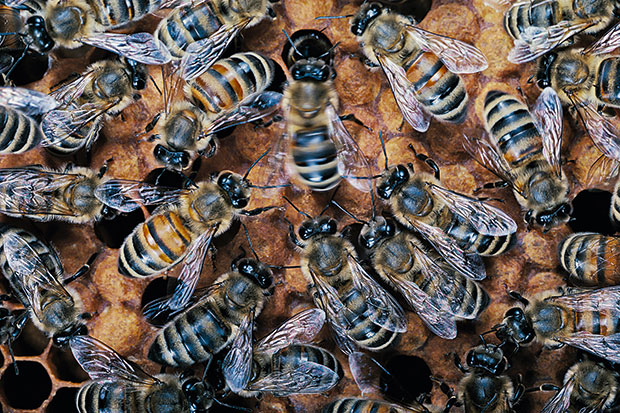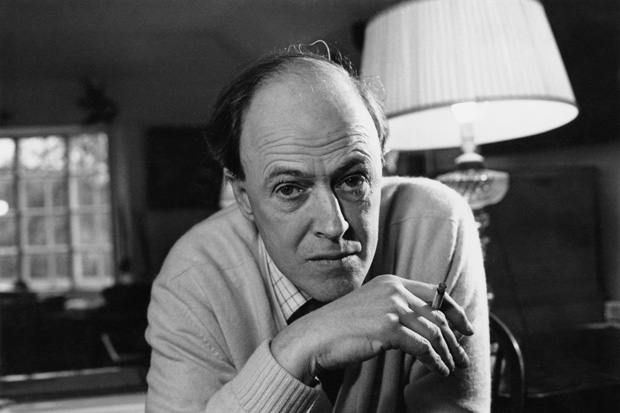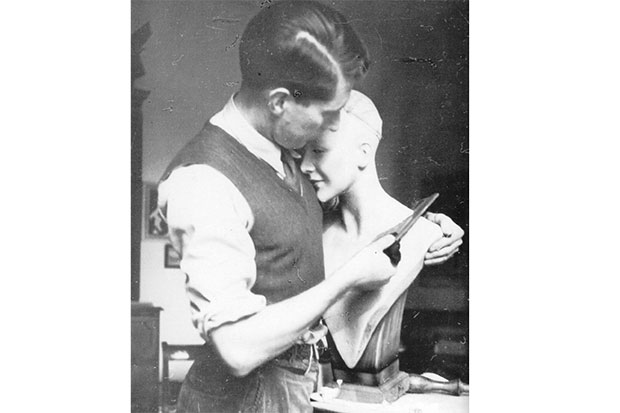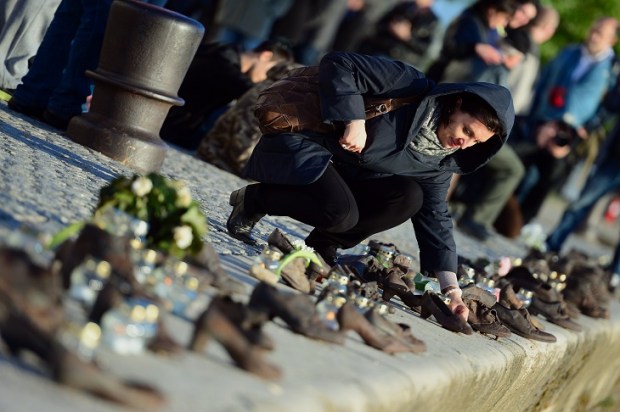The Dancing Bees is a romantic title, evoking fantasy and fairy tale rather than scientific rigour, but actually this book is a story of fearsome determination. It is a biography of Karl von Frisch, who discovered the language of the honeybee, but Tania Munz’s account is much more besides, as it reveals the scientist’s struggle for survival under the Nazi regime.
Although I kept bees for many years, I had no idea of the work which won Von Frisch a Nobel prize in 1973. I was first introduced to the waggle-dance, this marvel of the animal kingdom, in a laboratory at the University of Sussex. Francis Ratnieks, professor of apiculture, sat me in front of one of his observation hives where you could watch the colony of bees at work through a glass panel. There I plainly witnessed what is described as the most sophisticated form of non-human communication — the waggle-dance. One bee just back from foraging for nectar traced a figure-of-eight pattern again and again while vibrating her abdomen. The bee was telling her sisters where she had been to find nectar — not just the direction of the flowers, but the distance too.
This dance has been observed since the time of Aristotle, but it was only when Von Frisch embarked on his painstaking work that the reasons for the waggle were finally unravelled. Munz’s fascinating book traces that journey. Von Frisch’s Austrian childhood reminds me of Gerald Durrell’s youthful passion for animals. Karl had a menagerie of 123 animals, only nine of which were mammals. A small parakeet named Tschocki was his constant companion, sitting on his shoulder and nibbling his papers. His real skill lay in raising fish, and when he became an professional zoologist aquatic experiments became his speciality and led him into a surprisingly ferocious debate about whether fish were colour-blind or not.
It seemed almost by chance that bees were drawn into this research, but they had one practical advantage — unlike fish, they weren’t prone to dying on their way to scientific conferences. Von Frisch’s work centred on the question of why bees are drawn to certain flowers. Previous work assumed that it was simply a question of smell. Through a series of experiments (which Munz describes with admirable clarity) involving soaking yellow and gray paper squares in sugar water, Von Frisch was able to establish that bees could discern the colour yellow. From my own experience, bees are certainly drawn to yellow flowers which is why they are so often found on fields of oilseed rape (though of course many other colours are inviting as well).
In 1917 Von Frisch made a discovery which he described as the most fateful observation of his life: the secret of the bees’ mysterious dances. He had borrowed an observation hive and set up a dish of honey nearby, marking bees which visited it with a red dot. Once the honey was finished, he filled it with sugar water and watched as a single bee came to the dish. She then returned to the hive and Von Frisch recalls, ‘I couldn’t believe my eyes.’ The bee performed a dance while the others touched her abdomen with their antennae. Some of the bees which had visited the dish then returned to it. But even more remarkably, new ones, after observing the dance, arrived at the location without any escorts. Von Frisch concluded that the dances were an expression of bee language.
In 1925 the University of Munich offered Von Frisch a prestigious post with plenty of resources to carry on his research, but it is at this point that Munz’s narrative darkens. At the university some students and teachers were attracted to the fascist ideology; by the time Hitler gained power in 1933, it was possible to conduct a purge and many Jewish members of staff were sacked. Von Frisch faced anonymous accusations for hiring too many Jews and Munz quotes a pamphlet, The Neutral Scholar, which attacked an unnamed professor for devoting too much attention to insects while neglecting his own Volk.
Far more dangerous was the accusation that Von Frisch himself was Jewish. It seems extraordinary now that while the Nazis prepared for war, they were devoting resources to a genealogical department designed to root out anyone of Jewish descent from the government payroll. These zealous officials discovered that Von Frisch’s maternal great-grandparents were Jewish converts to Catholicism. The chillingly bureaucratic letter arrived, demanding that he resign his job because he was a ‘second-degree crossbreed’.
Various academics tried to intervene on Von Frisch’s behalf without success. Help came in an unexpected form: a disease called nosema which was wiping out German bees just as the varroa mite is destroying so much of the modern population. The president of the South Bavarian Beekeepers wrote to Nazi HQ imploring them to spare ‘the most successful bee researcher of the world’ in order to help the ‘catastrophic emergency situation’. He even invoked the Führer’s understanding of apiculture, which Hitler had inherited from his father, who was known to have kept bees.
Munz observes that this intervention chimed with the Nazi ideology of Blut und Boden (blood and soil), which meant that agriculturally based sciences were given priority. In 1942 Himmler set up an institute for the eradication of insect pests. Finally, after further pressure on the Ministry of Food and Agriculture citing the issue of 800,000 dying colonies, it was finally agreed that Von Frisch could continue his work to combat the nosema plague.
Though Von Frisch’s life was not now in danger, his experience shows how even apparently independent centres of scientific research can fall prey to evil ideology. Von Frisch himself wondered, in his postwar autobiography, whether it would have been possible to prevent the rise of Nazism and concluded that so many professors welcomed the changes that ‘soon it was clear that any serious opposition would lead to one’s personal destruction’. But it would be wrong to think that Von Frisch simply stood by. Munz recounts his intervention, through a former student, on behalf of a Polish scientist who was released from Dachau in 1940.
Throughout this traumatic period and after the war, Von Frisch continued his study of bee communication. Munz rightly observes that in science the simplest possible explanation is preferred — Occam’s Razor. So given the bees’ acute sense of smell, could it simply be odour which was leading them to faraway plants? Von Frisch sealed their odour glands with shellac and yet the desire to dance was undiminished. Further research indicated that the speed of the dances grew more rapid as the food sources were moved nearer the hive. The bees were able to indicate distance.
Closer observation of the dances brought an even more extraordinary discovery. The bees were tracing a diagram in their dance, using the sun as a guide. Dancing directly upwards towards the roof of the hive means head towards the sun for the best flowers. A directly downwards dance means head away from the sun.
Contemporaries of Von Frisch were amazed. William Thorpe from Cambridge wrote: ‘We are forced to ask ourselves whether apart from human faculties there is anything more comparable known in the animal kingdom?’
The post The mystery of the waggle-dance appeared first on The Spectator.
Got something to add? Join the discussion and comment below.
Get 10 issues for just $10
Subscribe to The Spectator Australia today for the next 10 magazine issues, plus full online access, for just $10.
You might disagree with half of it, but you’ll enjoy reading all of it. Try your first month for free, then just $2 a week for the remainder of your first year.














Comments
Don't miss out
Join the conversation with other Spectator Australia readers. Subscribe to leave a comment.
SUBSCRIBEAlready a subscriber? Log in